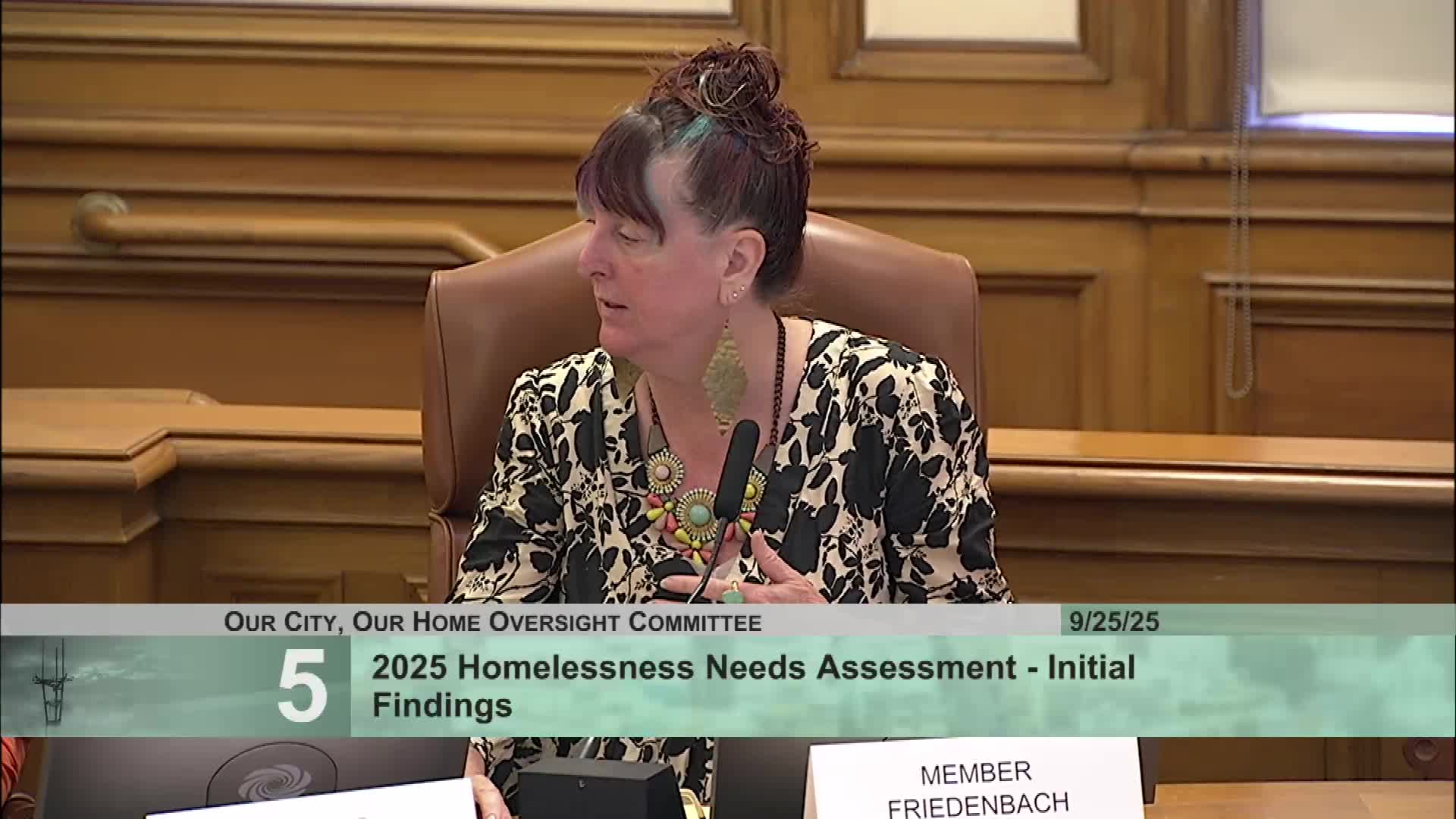Alameda County Secures $1.4B for Homelessness Response After Measure W Litigation
September 25, 2025 | San Francisco City, San Francisco County, California
This article was created by AI summarizing key points discussed. AI makes mistakes, so for full details and context, please refer to the video of the full meeting. Please report any errors so we can fix them. Report an error »

San Francisco's city officials are taking significant steps to address the ongoing homelessness crisis, focusing on improving the shelter system and exploring new funding opportunities. During a recent government meeting, members discussed the urgent need for effective shelter solutions, particularly for individuals with higher levels of behavioral health issues.
One key point raised was the importance of quickly moving individuals out of shelters, as many are currently stuck in a system that is not meeting their needs. Officials emphasized that shelters should serve as temporary emergency stays rather than long-term solutions. The discussion highlighted the necessity for shelters to provide a more supportive environment, allowing individuals to have their own space and privacy, which is crucial for recovery.
In addition to shelter improvements, the meeting also touched on the recent passage of Alameda County's Measure W, which allocates $1.4 billion over ten years for homelessness response initiatives. This funding is expected to support permanent housing and healthcare solutions, which could have a ripple effect on neighboring counties, including San Francisco. Officials expressed interest in tracking how these investments might influence homelessness trends across jurisdictions.
Concerns were also raised about the San Francisco Housing Authority's management of housing lottery placements. Reports indicated that some individuals have been waiting for over a year without updates, leading to increased rent burdens and potential evictions. This situation underscores the need for the Housing Authority to enhance its efficiency in processing placements.
As San Francisco grapples with these challenges, city officials are calling for a shift from punitive measures to more compassionate, long-term solutions that prioritize the well-being of residents. The discussions reflect a growing recognition that addressing homelessness requires collaboration and innovative approaches, particularly in light of the substantial investments being made in surrounding areas.
One key point raised was the importance of quickly moving individuals out of shelters, as many are currently stuck in a system that is not meeting their needs. Officials emphasized that shelters should serve as temporary emergency stays rather than long-term solutions. The discussion highlighted the necessity for shelters to provide a more supportive environment, allowing individuals to have their own space and privacy, which is crucial for recovery.
In addition to shelter improvements, the meeting also touched on the recent passage of Alameda County's Measure W, which allocates $1.4 billion over ten years for homelessness response initiatives. This funding is expected to support permanent housing and healthcare solutions, which could have a ripple effect on neighboring counties, including San Francisco. Officials expressed interest in tracking how these investments might influence homelessness trends across jurisdictions.
Concerns were also raised about the San Francisco Housing Authority's management of housing lottery placements. Reports indicated that some individuals have been waiting for over a year without updates, leading to increased rent burdens and potential evictions. This situation underscores the need for the Housing Authority to enhance its efficiency in processing placements.
As San Francisco grapples with these challenges, city officials are calling for a shift from punitive measures to more compassionate, long-term solutions that prioritize the well-being of residents. The discussions reflect a growing recognition that addressing homelessness requires collaboration and innovative approaches, particularly in light of the substantial investments being made in surrounding areas.
View full meeting
This article is based on a recent meeting—watch the full video and explore the complete transcript for deeper insights into the discussion.
View full meeting
